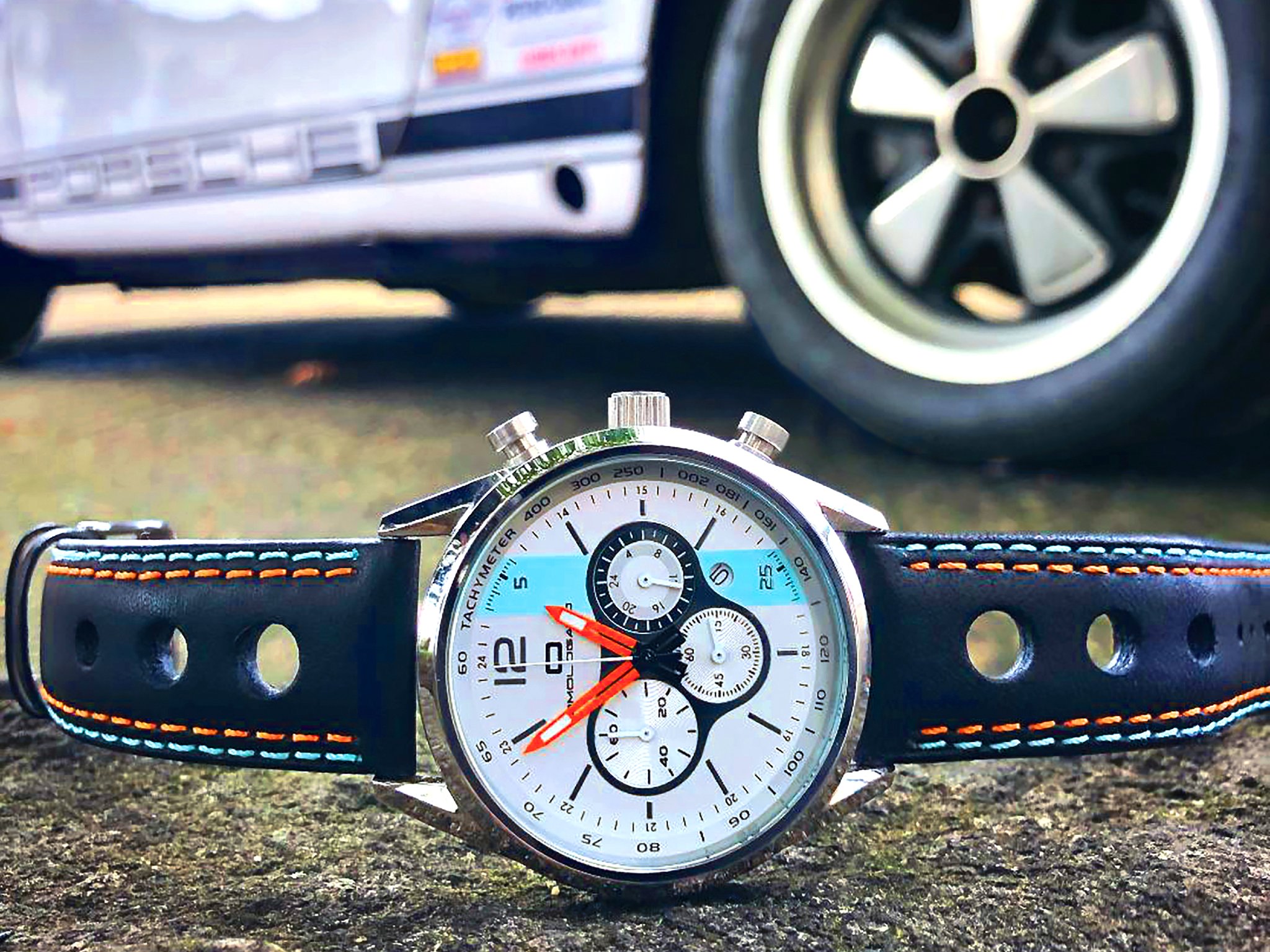Shami Kalra’s Blog: Why we still wear a wrist watch
What’s the deal with car guys/gals and watches? The founder of Omologato watches tries to make sense of it
 Omologato watches
Omologato watchesWords by: Shami Kalra
I start by acknowledging the modern world and how many people tell me they don’t need a watch. The most common reason is something to do with a phone or some device they call a watch that answers it, but I usually turn off at this point. Those that do understand will probably carry on reading. I am at my desk on a sunny Saturday lockdown afternoon, in London, surrounded by about fifty wrist watches, each telling a story not just the time, and that’s what a wrist watch should do. Let me explain.
I remember a few years ago, a young man showing me his ordinary quartz watch, something that would be worth ₹500 to you or me but priceless to him because his late grandfather gave it to him for his 18th birthday. His passion for it was as much as his recently restored 1967 MG Roadster. On the flip side, I often meet people who’ve spent a crore on a watch and when asked why they chose that model, the usual reply is something like, “it’s gold”. I know who I’d rather have a beer with.
 Shami Kalra, founder of Omologato watches
Shami Kalra, founder of Omologato watches
The fact that men are still buying and cherishing quality timepieces is of great comfort to an industry that, in the early 1970s, thought its time (excuse the pun if you will), had come. The invention of the quartz watch (in analog or digital form) in 1967 might initially have been hailed as a great technological achievement. But it wasn't long before it was also seen as the biggest challenge the traditional timepiece had faced since the wristwatch first became popular at the end of the First World War. The fact that a cheap Casio with a flashing LED time display was what every young hipster soon craved, coupled with the economic doldrums in which the world found itself in the 1970s, spelled disaster.
It took a few years of navel-gazing and re-evaluating what a watch was truly for before, till a few forceful and inventive characters in the mid-1980s came back with a design philosophy and marketing program that brought the sector back from the brink. These horological pioneers decided that watches would not merely be timekeepers, they would be mini-masterpieces that showcased extreme craftsmanship, represented tradition, incorporated technology and embraced innovation. They would effectively be a Savile Row suit, Ferrari sports car, and NASA spaceship rolled into one package that could sit neatly on your wrist.
The idea that technology would deal a fatal blow to the watch, simply hasn't panned out. Men now own mobile phones as well as — not instead of — their timepieces. Watches are one of the few items that a man can wear that displays true character, a sign of his passion or his interests – whether it's a Patek Phillipe or an Omologato.
That brings me on to why I started Omologato. Car people like me love most things mechanical, I recently put up a slomo video on social media of the headlight wipers on my 90s Mercedes SL — the interaction was insane! So to have a hand built ‘engine’ on your wrist seems a natural thing for people like us. To then add heritage, a motorsport connection and personality makes it, for me anyway, even more desirable.
Whether it costs ₹500 or ₹5 crore, men clock the watch on the wrist of the man (and woman!) they’re meeting in the same way women might take note of another's shoes (though men are doing that as well these days). It's what we do. And the watch industry is very happy about that.


